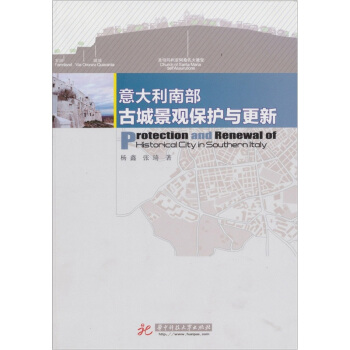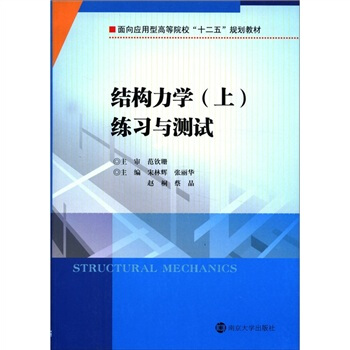![積分幾何與幾何概率(英文版) [Integral Geometry and Geometric Probability]](https://pic.windowsfront.com/10515943/295ba79a-5005-4edc-a1db-6fa3164a97ac.jpg)

具體描述
內容簡介
Though its title "Integral Geometry" may appear somewhat unusual in thiscontext it is nevertheless quite appropriate, for Integral Geometry is anoutgrowth of what in the olden days was referred to as "geometric probabil-ities."Originating, as legend has it, with the Buffon needle problem (which afternearly two centuries has lost little of its elegance and appeal), geometricprobabilities have run into difficulties culminating in the paradoxes ofBertrand which threatened the fledgling field with banishment from the homeof Mathematics. In rescuing it from this fate, Poincar6 made the suggestionthat the arbitrariness of definition underlying the paradoxes could be removedby tying closer the definition of probability with a geometric group of which itwould have to be an invariant.
內頁插圖
目錄
Editors StatementForeword
Preface
Chapter 1. Convex Sets in the Plane
1. Introduction
2. Envelope of a Family of Lines
3. Mixed Areas of Minkowski
4. Some Special Convex Sets
5. Surface Area of the Unit Sphere and Volume of the Unit Ball
6. Notes and Exercises
Chapter 2. Sets of Points and Poisson Processes in the Plane
1. Density for Sets of Points
2. First Integral Formulas
3. Sets of Triples of Points
4. Homogeneous Planar Poisson Point Processes
5. Notes
Chapter 3. Sets of Lines in the Plane
1. Density for Sets of Lines
2. Lines That Intersect a Convex Set or a Curve
3. Lines That Cut or Separate Two Convex Sets
4. Geometric Applications
5. Notes and Exercises
Chapter 4. Pairs of Points and Pairs of Lines
1. Density for Pairs of Points
2. Integrals for the Power of the Chords of a Convex Set.
3. Density for Pairs of Lines
4. Division of the Plane by Random Lines
5. Notes
Chapter 5. Sets of Strips in the Plane
1. Density for Sets of Strips
2. Buffons Needle Problem
3. Sets of Points, Lines, and Strips
4. Some Mean Values
5. Notes
Chapter 6. The Group of Motions in the Plane: Kinematic Density .
1. The Group of Motions in the Plane
2. The Differential Forms on 9Jl
3. The Kinematic Density
4. Sets of Segments
5. Convex Sets That Intersect Another Convex Set
6. Some Integral Formulas
7. A Mean Value; Coverage Problems
8. Notes and Exercises
Chapter 7. Fundamental Formulas of Poinear~ and Blaschke
1. A New Expression for the Kinematic Density
2. Poincar6s Formula
3. Total Curvature of a Closed Curve and of a Plane Domain
4. Fundamental Formula of Blaschke
5. The lsoperimetric Inequality .
6. Hadwigers Conditions for a Domain to Be Able to Contain Another
7. Notes
Chapter 8. Lattices of Figures
1. Definitions and Fundamental Formula
2. Lattices of Domains
3. Lattices of Curves
4. Lattices Of Points
5. Notes and Exercise
Chapter 9. Differential Forms and Lie Groups
1. Differential Forms
2. Pfaffian Differential Systems
3. Mappings of Differentiable Manifolds
4. Lie Groups; Left and Right Translations
5. Left-lnvariant Differential Forms
6. Maurer-Cartan Equations
7. lnvariant Volume Elements of a Group: Unimodular Groups
8. Notes and Exercises
Chapter 10. Density and Measure in Homogeneous Spaces
1. Introduction
2. invariant Subgroups and Quotient Groups
3. Other Conditions for the Existence of a Density on Homo-geneous Spaces
4. Examples
5. Lie Transformation Groups
6. Notes and Exercises
Chapter 11. The Affine Groups
1. The Groups of Affine Transformations
2. Densities for Linear Spaces with Respect to Special Homo-geneous Affinities
3. Densities for Linear Subspaces with Respect to the SpecialNonhomogeneous Affine Group
4. Notes and Exercises
Chapter 12. The Group of Motions in E,
1. Introduction
2. Densities for Linear Spaces in E
3. A Differential Formula
4. Density for r-Planes about a Fixed q-Plane
5. Another Form of the Density for r-Planes in
6. Sets of Pairs of Linear Spaces
7. Notes
Chapter 13. Convex Sets in
1. Convex Sets and Quermassintegrale
2. Cauchys Formula
3. Parallel Convex Sets; Steiners Formula
4. Integral Formulas Relating to the Projections of a Convex Set on Linear Subspaces
5. Integrals of Mean Curvature
6. Integrals of Mean Curvature and Quermassintegrale.
7. Integrals of Mean Curvature of a Flattened Convex Body
8. Notes
Chapter 14. Linear Subspaces, Convex Sets, and Compact Manifolds
1. Sets of r-Planes That Intersect a Convex Set
2. Geometric Probabilities
3. Croftons Formulas in En
4. Some Relations between Densities of Linear Subspaces
5. Linear Subspaces That Intersect a Manifold
6. Hypersurfaces and Linear Spaces
7. Notes
Chapter 15. The Kinematic Density in E
1. Formulas on Densities
2. Integral of the Volume
3. A Differential Formula
4. The Kinematic Fundamental Formula
5. Fundamental Formula for Convex Sets
6. Mean Values for the Integrals of Mean Curvature
7. Fundamental Formula for Cylinders
8. Some Mean Values
9. Lattices in En.
10. Notes and Exercise
Chapter 16. Geometric and Statistical Applications; Stereology
1. Size Distribution of Particles Derived from the Size Distribution of Their Sections
2. Intersection with Random Planes
3. Intersection with Random Lines
4. Notes
Chapter 17. Noneuclidean Integral Geometry
1. The n-Dimensional Noneuclidean Space
2. The Gauss-Bonnet Formula for Noneuclidean Spaces
3. Kinematic Density and Density for r-Planes
4. Sets of r-Planes That Meet a Fixed Body
5. Notes
Chapter 18. Croftons Formulas and the Kinematic Fundamental Formula
in Noneuclidean Spaces
1. Croftons Formulas
2. Dual Formulas in Elliptic Space
3. The Kinematic Fundamental Formula in Noneuclidean
Spaces
4. Steiners Formula in Noneuclidean Spaces
5. An Integral Formula for Convex Bodies in Elliptic Space
6. Notes
Chapter 19. Integral Geometry and Foliated Spaces; Trends in Integral Geometry
1. Foliated Spaces
2. Sets of Geodesics in a Riemann Manifold
3. Measure of Two-Dimensional Sets of Geodesics
4. Measure of (2n - 2)-Dimensional Sets of Geodesics
5. Sets of Geodesic Segments
6. Integral Geometry on Complex Spaces
7. Symplectic Integral Geometry
8. The Integral Geometry of Gelfand
9. Notes
Appendix. Differential Forms and Exterior Calculus
1. Differential Forms and Exterior Product
2. Two Applications of the Exterior Product
3. Exterior Differentiation
4. Stokes Formula
5. Comparison with Vector Calculus in Euclidean Three-Dimensional Space
6. Differential Forms over Manifolds
Bibliography and References
Author Index
Subiect Index
前言/序言
This monograph is the first in a projected series on Probability Theory.Though its title "Integral Geometry" may appear somewhat unusual in thiscontext it is nevertheless quite appropriate, for Integral Geometry is anoutgrowth of what in the olden days was referred to as "geometric probabil-ities."
Originating, as legend has it, with the Buffon needle problem (which afternearly two centuries has lost little of its elegance and appeal), geometricprobabilities have run into difficulties culminating in the paradoxes ofBertrand which threatened the fledgling field with banishment from the homeof Mathematics. In rescuing it from this fate, Poincar6 made the suggestionthat the arbitrariness of definition underlying the paradoxes could be removedby tying closer the definition of probability with a geometric group of which itwould have to be an invariant.
Thus a union of concepts was born that was to become Integral Geometry. It is unfortunate that in the past forty or so years during which ProbabilityTheory experienced its most spectacular rise to mathematical prominence,Integral Geometry has stayed on its fringes. Only quite recently has there beena reawakening of interest among practitioners of Probability Theory in thisbeautiful and fascinating branch of Mathematics, and thus the book byProfessor Santal6, for many years the undisputed leader in the field of IntegralGeometry, comes at a most appropriate time. Complete and scholarly, the book also repeatedly belies the popular beliefthat applicability and elegance are incompatible. Above all the book should remind all of us that Probability Theory ismeasure theory with a "soul" which in this case is provided not by Physics or bygames of chance or by Economics but by the most ancient and noble of allof mathematical disciplines, namely Geometry.
用戶評價
這本書的排版和裝幀質量確實達到瞭國際一流水準,紙張的質感拿在手裏非常舒適,即便是長時間的閱讀也不會感到眼睛疲勞。我特彆欣賞其中大量精美的插圖和圖示,它們不僅僅是公式的輔助說明,更像是獨立完成的藝術品,將抽象的幾何概念以可視化的方式呈現齣來。比如,書中關於“綫束的運動”和“積分不變量”的章節,如果沒有那些細緻的配圖,我恐怕會深陷於符號的迷宮中無法自拔。這種對細節的關注,體現瞭齣版方對學術內容的尊重。在處理復雜的微積分和微分幾何時,圖文並茂的呈現方式極大地降低瞭初學者的理解門檻,讓人感覺作者是真正站在讀者的角度來組織材料的,而不是僅僅滿足於學術展示的需要。
評分這本書的封麵設計真是充滿瞭古典與現代的交融感,深邃的藍色背景上浮動著抽象的幾何圖形,似乎預示著一場思維的探險即將展開。我第一次翻開它時,就被那種嚴謹而又不失優雅的數學語言深深吸引住瞭。雖然我並不是這個領域的專傢,但作者試圖用一種清晰、有條理的方式,將那些看似遙不可及的積分概念與我們日常所見的幾何形態聯係起來,這種努力本身就值得稱道。特彆是開篇關於“測度”和“不變性”的探討,為後續復雜的定理鋪設瞭堅實的基礎。它不是那種一上來就拋齣深奧公式的書籍,而是更像一位耐心的老師,一步步引導你進入這個迷人的世界。對於那些希望係統性理解幾何學在概率論中扮演關鍵角色的讀者來說,這本書提供瞭一個絕佳的起點,它挑戰瞭我們對空間和隨機性的傳統認知,讓人在閱讀過程中不斷産生“原來如此”的頓悟感。
評分閱讀這本書的過程中,我深刻體會到瞭一種跨學科的思維碰撞。它不僅僅是數學工具的堆砌,更像是一部關於“度量世界”哲學的探討錄。作者在闡述某些定理時,總會不經意地引申到物理學、甚至統計學中的實際應用場景,這使得原本枯燥的理論推導變得生動起來。我尤其對其中關於“隨機切割”和“幾何概率悖論”的討論印象深刻,它揭示瞭如何在不規則的設定下建立可靠的概率模型。這種將純粹的數學邏輯應用於解決現實世界中模糊問題的能力,是這本書最寶貴的地方。它教會我,幾何學並非隻是研究形狀的靜態描述,更是描述事物演化和隨機分布的動態語言,這種深刻的洞察力是其他同類教材難以企及的。
評分這本書在語言的運用上,展現齣一種獨特的英式學術風格——精確、剋製,卻又在關鍵時刻爆發齣思想的光芒。譯文(假設我閱讀的是外文原版或高質量譯本)的流暢性毋庸置疑,它成功地保留瞭原著中那種邏輯推進的韻律感,沒有齣現生硬的術語堆砌或不自然的句式結構。特彆是那些長難句的拆解和重組,都處理得非常到位,使得復雜的數學定義在清晰度和準確性之間取得瞭完美的平衡。它讓你感覺,作者是在與一位學識淵博的同行進行著一場高水平的學術對話,而不是在被動地接收知識灌輸。這種閱讀體驗是極其愉悅且富有啓發性的,它極大地提升瞭對高等數學學習的興趣和耐性。
評分坦率地說,這本書的深度對非專業人士構成瞭不小的挑戰,但這種挑戰本身就是一種價值。它絕不是一本“速成”指南,更像是一部需要反復研讀的經典著作。在深入到高級主題,例如黎曼流形上的積分幾何概念時,我發現自己不得不頻繁地查閱相關的拓撲學和微分幾何預備知識。這提醒我,要真正掌握這些內容,需要一個紮實的數學基礎作為支撐。然而,即便是那些暫時無法完全理解的段落,它們所蘊含的數學美感和邏輯嚴密性也令人摺服。對於那些追求學術深度、渴望在數學研究領域有所建樹的讀者來說,這本書無疑是一塊試金石,它能幫助你搭建起更高維度的數學認知框架。
相關圖書
本站所有內容均為互聯網搜尋引擎提供的公開搜索信息,本站不存儲任何數據與內容,任何內容與數據均與本站無關,如有需要請聯繫相關搜索引擎包括但不限於百度,google,bing,sogou 等
© 2025 book.coffeedeals.club All Rights Reserved. 靜流書站 版權所有



![現代生態學講座(5):宏觀生態學與可持續性科學 [Lectures in Modern Ecology(5)Large-Scale Ecology and Sustainability Science] pdf epub mobi 電子書 下載](https://pic.windowsfront.com/10695792/5652a694Ne6428726.jpg)
![代數學 [Algebra] pdf epub mobi 電子書 下載](https://pic.windowsfront.com/10758848/rBEGEE-wtOEIAAAAAAArDxBHZ4AAAA7dAE-SNUAACsn592.jpg)









![加性數論:逆問題與和集幾何 [Additive Number Theory:Inverse Problems and the Geometry of Sumsets] pdf epub mobi 電子書 下載](https://pic.windowsfront.com/11046579/rBEIDFAYzLYIAAAAAADxehKtYkMAAFaVwJ1mf0AAPGS658.jpg)
![現代生態學講座(3):學科進展與熱點論題 [Lectures in Modern Ecology(3):Advances and Key Topics] pdf epub mobi 電子書 下載](https://pic.windowsfront.com/11060733/5652a6a7Ndf1766d3.jpg)




